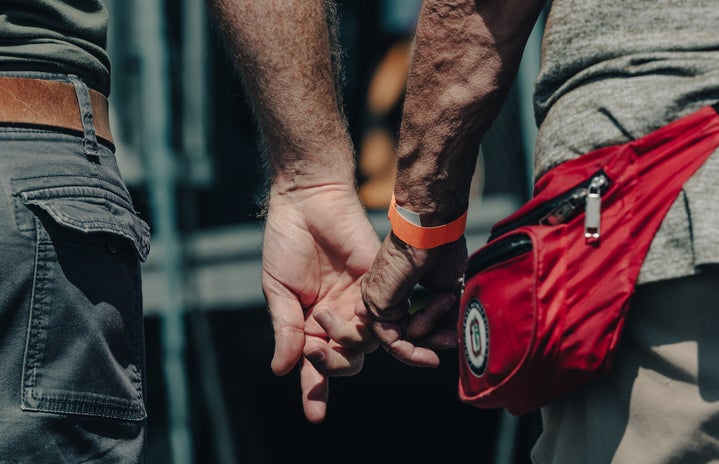They are doing it again. My friends and I have a meal together, and all they talk about is their partners and their relationships. Usually, I would consider myself a strong, independent person who doesn’t need someone else to feel complete. I even wrote a song called “Strong Independent Woman”. But you know what? Sometimes strong independent people wish they would meet “the one” (especially when their friends only fawn over their relationships).
That is not to say that I have an unrealistic expectation of the perfect man who would swoop me off my feet, I know I’m not living in a Cecelia Ahern novel. But I still believe that as cliche as it sounds, there is someone out there for me. And there is.
Now that I have a boyfriend, looking back on my life as a single pringle I often asked myself a series of questions. Why was I still single? Why did my dates never amount to anything more? Was I the problem?
When I started looking at my previous three situationships (that’s when you’re in the dating phase without a label), I realised that the only thing in common was me. I was the problem. I realised that I had a self-imposed three-date rule. After three dates I needed to know if the relationship was going to amount to anything or if I was going back to late-night swiping on the dating apps. Why the three-date rule? I think that was a way for me to minimise how emotionally invested I got in a person. In trying not to get emotionally hurt, I formed an idea of a fixed trajectory on how a relationship would form. In other words, I was impatient when I couldn’t immediately get what I wanted, and quickly moved on to the next person.
A couple of weeks after I had my epiphany, I started chatting with someone new and kept reminding myself to put aside my expectations, be patient and not make this next man a victim of my three-date rule. I went on a date with him thinking I had nothing to lose. I thought that if I went on dates and it worked out, I would gain a partner. If it didn’t work out the only thing I would have lost was time and some money. It was this liberation from any preconceived notions about dates needing to end up in a relationship that allowed me to be myself and helped me enjoy the process of getting to know a person. The first date went well and soon after there was a second, a third, and miraculously, a fourth. A couple of months into dating, we decided to make it official on one of the most romantic dates ever – but that’s a story for another day.
Turns out dating and getting into a relationship was the least of my worries – staying in one was. In the wise words of Devi Vishwakumar’s therapist in the Netflix series Never Have I Ever, “Did we discover that being in a romantic relationship doesn’t necessarily solve all of our problems?” Remember that three-date rule I imposed on my situationships? That was a result of my fearful avoidant attachment style, which continues to haunt me in my relationship. We would have a perfect date and I would have an impulsive thought to end things despite wanting to be closer to my boyfriend. That could not be normal.
In trying to process these emotions, I did a lot of research, and by research, I mean watching a bunch of YouTube videos about attachment styles. I learnt that an attachment style categorises an individual’s behavioural patterns in relationships (whether it be romantic, platonic or even familial). While I believe the traits we exhibit may not be defined to a singular attachment style, knowing the different attachment styles is key in helping you be in a relationship and stay in one. These are the four main attachment styles:
1. Secure
As the name suggests, this attachment style implies an ease in expressing emotions with their partner. It is this emotional openness that allows them to trust their partners and be honest about what they feel.
2. Anxious-preoccupied
This attachment style refers to people who often seek attention and approval from their partners. The thought of being single causes them high levels of anxiety and they tend to uncontrollably overthink if their partner is still invested in the relationship and if they are a priority.
3. Dismissive-avoidant
The dismissive avoidant is fiercely independent, self-sufficient and tends to believe they do not need a relationship to be happy in life. However, they can also be emotionally distant as they usually repress any difficult feelings as a coping mechanism.
4. Fearful-avoidant
A combination of the anxious-preoccupied and dismissive-avoidant styles, the fearful-avoidant is one that has erratic behaviour in a relationship. They desire closeness yet are emotionally closed off to their partner. Due to a strong fear of getting hurt, they tend to have difficulty controlling their feelings in a relationship.
(If you’re still unsure about your attachment style after reading the descriptions, click here for a short quiz to find out!)
While not many of us would have a secure attachment style or find a partner with one, this does not mean all hope is lost. After knowing our attachment style, the next step is being aware of our behaviour and seeking psychological help if necessary. After knowing more about my fearful-avoidant tendency to be emotionally vulnerable yet closed off at the same time, I viewed those sudden thoughts of wanting to break up differently. I recognised that my erratic feelings were how my body responded to love and affection and that I had to fight through those feelings of discomfort if I wanted to be a better partner for myself and for my boyfriend.
In a relationship, it is important to find out what your partner’s attachment style is because any combination of attachment styles would lead to vastly different and sometimes explosive dynamics. For my relationship, my fearful-avoidant attachment style and his anxious-preoccupied one was a recipe for disaster. When I was emotionally distant, he would need reassurance, and when he was having anxiety about us staying together, chances were I was spiralling too. Needless to say, the first few months were tough and it really forced me to confront all the demons I thought I had locked away for good.
I started journaling every time I felt a strong inclination to leave my relationship to try and take a step back to rationalise my thoughts before I said or did something I would regret. Meditating for five minutes a day helped me to be in the present moment instead of being controlled by my thoughts. I only practise journaling and meditation when I find myself having fearful-avoidant tendencies.
So, the next time you wonder why your partner feels a little cold towards you or wonder why you feel the need for an instant reply from them, think about your attachment style. As I write this, I still fight through my fearful-avoidant tendencies to sabotage my relationship. It’s a constant battle. To me, relationships are about working on yourself and learning about your partner’s needs if you want them to last. Remember that your feelings are valid and I hope you get to acquaint yourself with your attachment style because they are gonna be with you for a long time to come.
(P.S. If you would like to know more about attachment styles, I highly recommend checking out Thais Gibson’s videos on Youtube. She does a deep dive into each attachment style and offers step-by-step advice to feeling more secure in your relationship)


